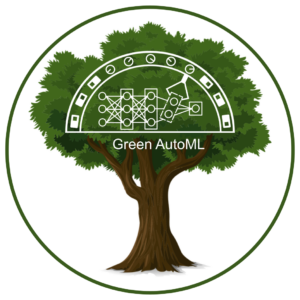 AutoML is a resource and time-consuming task resulting in a large environmental footprint. Therefore it is key to figure out smart ways to save resources and reduce the carbon emissions of AutoML, coined as Green AutoML. On one hand, one can make the AutoML method itself more efficient, e.g., using data compression, zero-cost AutoML, energy-aware objective functions, multi-fidelity evaluations, or intelligent early termination. On the other hand, one can search for energy-efficient pipelines, e.g., having a model size constraint, energy-efficient architectures, or model compression. Overall, an important question arises: what to do with the savings? Very straightforward, one could terminate early and therefore gift the saved time and resources somehow to the planet. On the other hand, one could use the (already budgeted) time to further search for better candidate pipelines. In any case, quantifying the environmental footprint is the foundation for any research within the field of Green AutoML. This non-trivial task can be approximated in terms of counting CPU / GPU hours, which can be easily obtained with the support of suitable tools.
AutoML is a resource and time-consuming task resulting in a large environmental footprint. Therefore it is key to figure out smart ways to save resources and reduce the carbon emissions of AutoML, coined as Green AutoML. On one hand, one can make the AutoML method itself more efficient, e.g., using data compression, zero-cost AutoML, energy-aware objective functions, multi-fidelity evaluations, or intelligent early termination. On the other hand, one can search for energy-efficient pipelines, e.g., having a model size constraint, energy-efficient architectures, or model compression. Overall, an important question arises: what to do with the savings? Very straightforward, one could terminate early and therefore gift the saved time and resources somehow to the planet. On the other hand, one could use the (already budgeted) time to further search for better candidate pipelines. In any case, quantifying the environmental footprint is the foundation for any research within the field of Green AutoML. This non-trivial task can be approximated in terms of counting CPU / GPU hours, which can be easily obtained with the support of suitable tools.
AutoML for Sustainability
AutoML can also be used for sustainable applications, thereby searching for well-performing machine learning pipelines and also minimizing their carbon emissions. One example is the usage of AutoML for plastic waste detection [Theodorakopoulos et. al. 2023].
Reference
- Tanja Tornede, Alexander Tornede, Jonas Hanselle, Marcel Wever, Felix Mohr, and Eyke Hüllermeier
Towards Green Automated Machine Learning: Status Quo and Future Directions
In: arXiv:2111.05850 (2021) - Roy Schwartz, Jesse Dodge, Noah A. Smith, and Oren Etzioni
Green AI
In: arXiv:1907.10597 (2019) - Aimee van Wynsberghe
Sustainable AI: AI for sustainability and the sustainability of AI
In: AI Ethics 1.3 (2021), pp. 213–218. doi: 10 . 1007/s43681-021-00043-6 - Alexandre Lacoste, Alexandra Luccioni, Victor Schmidt, and Thomas Dandres
Quantifying the Carbon Emissions of Machine Learning
In: arXiv:1910.09700 (2019) - David Patterson, Joseph Gonzalez, Urs Hölzle, Quoc Le, Chen Liang, Lluis-Miquel Munguia, Daniel Rothchild, David R. So, Maud Texier and Jeff Dean
The carbon footprint of machine learning training will plateau, then shrink
In: Computer 55.7 (2022), pp. 18–28. - Renbo Tu, Nicholas Roberts, Vishak Prasad, Sibasis Nayak, Paarth Jain, Frederic Sala, Ganesh Ramakrishnan, Ameet Talwalkar, Willie Neiswanger, and Colin White
AutoML for Climate Change: A Call to Action
In: NeurIPS 2022 Workshop on Tackling Climate Change with Machine Learning (2022) - Daphne Theodorakopoulos, Christoph Manss, Frederic Stahl, and Marius Lindauer
Green-AutoML For Plastic Litter Detection
In: ICLR: Tackling Climate Change with Machine Learning Workshop, 2023
Tools
- Victor Schmidt, Kamal Goyal, Aditya Joshi, Boris Feld, Liam Conell, Nikolas Laskaris, Doug Blank, Jonathan Wilson, Sorelle Friedler, and Sasha Luccioni
CodeCarbon: Estimate and Track Carbon Emissions from Machine Learning Computing
In: Zenodo (2021). doi: 10.5281/ zenodo.4658424 - Lasse F. Wolff Anthony, Benjamin Kanding, and Raghavendra Selvan
Carbontracker: Tracking and Predicting the Carbon Footprint of Training Deep Learning Models
In: arXiv:2007.03051 (2020) - Omar Shaikh, Jon Saad-Falcon, Austin P. Wright, Nilaksh Das, Scott Freitas, Omar Isaac Asensio, and Duen Horng Chau
EnergyVis: Interactively Tracking and Exploring Energy Consumption for ML Models
In: CHI ’21: CHI Conference on Human Factors in Computing Systems (2021), doi: 10.1145/3411763.3451780
